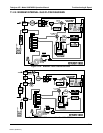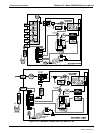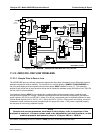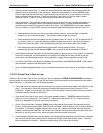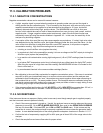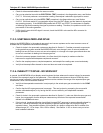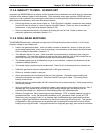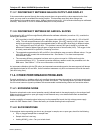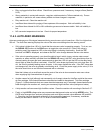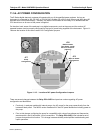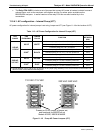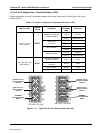
Teledyne API - Model 200EH/EM Operation Manual Troubleshooting & Repair
249
11.3.7. DISCREPANCY BETWEEN ANALOG OUTPUT AND DISPLAY
If the concentration reported through the analog outputs does not agree with the value reported on the front
panel, you may need to re-calibrate the analog outputs. This becomes more likely when using a low
concentration or low analog output range. Analog outputs running at 0.1 V full scale should always be calibrated
manually. See Section 6.13.4.4 for a detailed description of this procedure.
11.3.8. DISCREPANCY BETWEEN NO AND NO
X
SLOPES
If the slopes for NO and NO
X
are significantly different after software calibration (more than 1%), consider the
following two problems
NO
2
impurities in the NO calibration gas. NO gases often exhibit NO
2
on the order of 1-2% of the NO
value. This will cause differences in the calibration slopes. If the NO
2
impurity in NO is known, it can
easily be accounted for by setting the expected values for NO and NO
2
accordingly to different values,
e.g., 0.448 ppm NO and 0.45 ppm NO
X
. This problem is worse if NO gas is stored in a cylinder with
balance air instead of balance gas nitrogen or large amounts of nitrous oxide (N
2
O). The oxygen in the
air slowly reacts with NO to yield NO
2
, increasing over time.
The expected concentrations for NO and NO
X
in the calibration menu are set to different values. If a gas
with 100% pure NO is used, this would cause a bias. See Section 7.2 on how to set expected
concentration values.
The converter efficiency parameter has been set to a value not equal to 1.000 even though the
conversion efficiency is 1.0. The actual conversion efficiency needs to match the parameter set in the
CAL menu. See Section 7.1.5 for more information on this feature.
An instrument calibration with the IZS option (and expected concentrations set to the same amount) will always
yield identical slopes for NO and NO
X
, as the instrument measures only NO
X
and assumes NO to be the same
(with NO
2
being zero).
11.4. OTHER PERFORMANCE PROBLEMS
Dynamic problems (i.e. problems which only manifest themselves when the analyzer is monitoring sample gas)
can be the most difficult and time consuming to isolate and resolve. The following section provides an itemized
list of the most common dynamic problems with recommended troubleshooting checks and corrective actions.
11.4.1. EXCESSIVE NOISE
Excessive noise levels under normal operation usually indicate leaks in the sample supply or the analyzer itself.
Make sure that the sample or span gas supply is leak-free and carry out a detailed leak check as described
earlier in this chapter.
Another possibility of excessive signal noise may be the preamplifier board, the high voltage power supply
and/or the PMT detector itself. Contact the factory on trouble-shooting these components.
11.4.2. SLOW RESPONSE
If the analyzer starts responding too slow to any changes in sample, zero or span gas, check for the following:
Dirty or plugged sample filter or sample lines.
Sample inlet line is too long.
Leaking NO/NO
X
valve. Carry out a leak check.
04521C (DCN5731)



